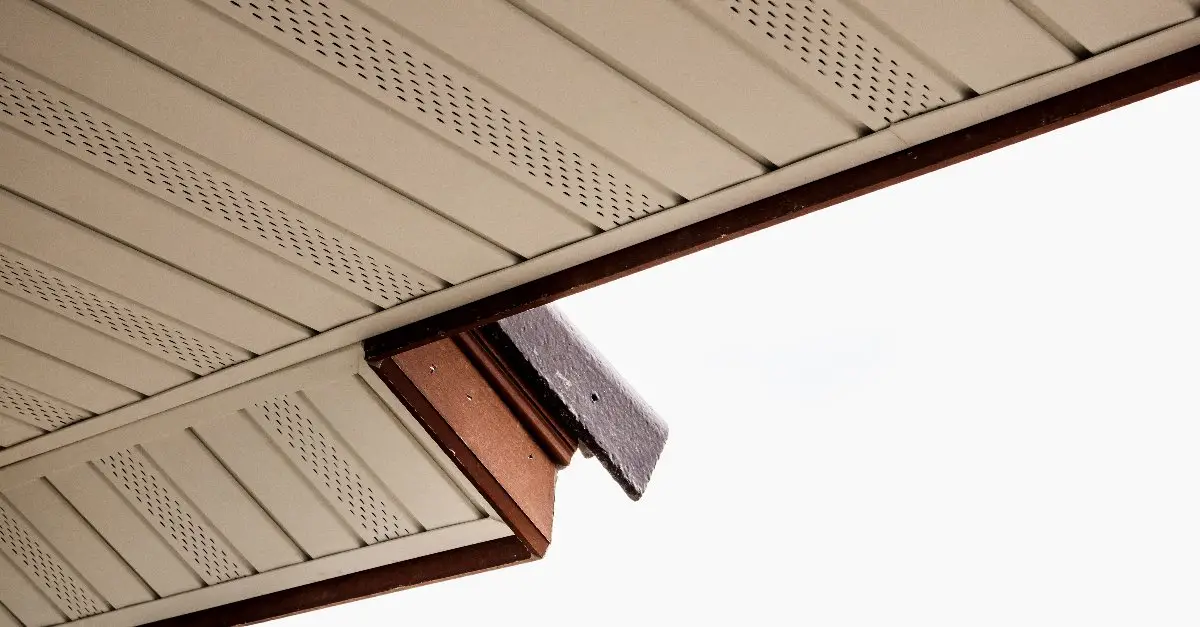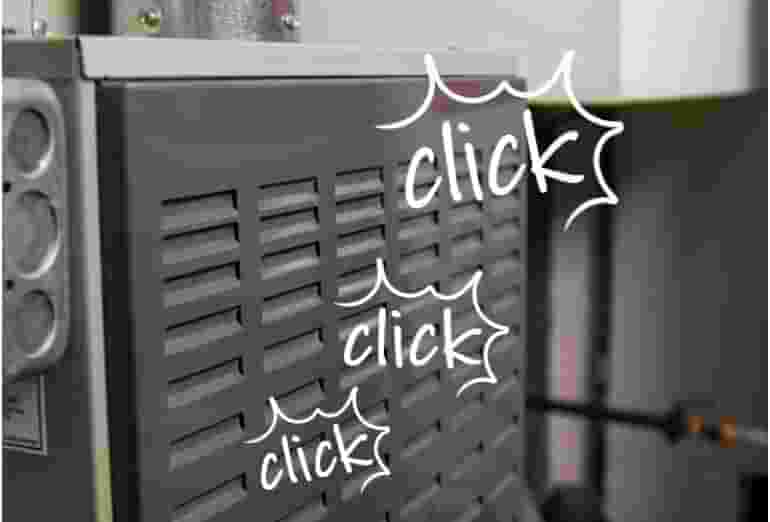Charleston, South Carolina is for summer lovers who love the subtropical climate and mild winters. It's situated on the coast of the Atlantic Ocean, which is the saltiest of the five ocean basins in the world. This is important to keep in mind because salt air corrosion is a big issue for coastal towns because it has such a negative impact on the exterior surfaces of buildings, including your fascia boards and soffits.

If you've lived here for at least a few years, you're probably well aware of the damage that can be caused to parts of your house by salt air corrosion—but it may not have crossed your mind to check out your soffit boards and make sure they're in good shape. Many homeowners aren't sure what exactly soffits are or why they're so important, which is understandable. Unlike more obvious parts of your exterior like siding or roof shingles, soffit boards aren't as well-known, and many people don't know the correct term even if they're aware of where they're located on the house.
Have you noticed problems like moisture in your attic or ice forming on the underside of your roof eaves? Those are a couple of signs that indicate there could be a serious problem that requires professional soffit repair. Charleston, SC property owners who need reliable soffit repair and other maintenance, improvement or repair services can count on their local Charleston handyman to get the job done right. The expert team of service professionals at Mr. Handyman of Charleston and Summerville is proud to serve the people of our local communities in and around Charleston, SC.
What Are Soffits and What Do They Do?
Considering that they are such a simple, unobtrusive, and easy-to-miss part of your house, it can be surprising to learn how absolutely crucial soffits are for protecting your house against severe water damage and other unpleasant problems like pest infestations. Soffits are the boards that cover the underside of your eaves, where the roof edge overhangs the exterior walls. In fact, the word soffit originates from a French word meaning "something fixed underneath." They are ventilated with holes or slats that are designed to increase air circulation in the attic space underneath your roof.
The ventilation is what prevents major moisture damage issues with your roof and attic—and by extension, the entire house. People tend to assume that a roof should be sealed up tight as a drum to prevent any moisture from getting in, but a completely sealed roof and attic spell certain disasters. Heat and humidity rise through your house and gather in the attic space, and if there's no way to vent it out, condensation forms on the underside of your roof and drips down, saturating the attic space in moisture (this phenomenon is often referred to as "attic rain"). The support structures of your house, including components like roof beams, are likely made of timber, which is susceptible to wood rot when it soaks up water. Since wood rot causes timber to soften and crumble apart, allowing the decay to fester for too long could lead to a roof collapse and other serious issues like flattened insulation and poor indoor air quality.
That's a big part of the reason why it's so essential to get soffit repair services when necessary to ensure your soffits are in good shape and able to provide the necessary air circulation to vent out excess heat and humidity from your attic space. But soffit boards also have some other important functions, such as blocking rodents and birds from getting into your attic. Soffits are often mentioned hand-in-hand with fascia boards, which cap off the edge of your roof eaves and run parallel to the exterior walls. The wood fascia board is typically where rain gutters are attached.
What Are the Signs I Need Soffit Repair in Charleston, SC?
Now that we have explained a bit more about why it's critical to recognize problems with your eaves and get your soffit repaired, Charleston, SC homeowners may be wondering how they can identify problems that require repair services. If you're aware of the indications that your roof line is in trouble, you can call your local Charleston handyman for help before it gets out of hand. Here are some of the top signs that you need soffit repair, or potentially a new soffit installation.
Gaps, Cracks and Holes
If you stand next to an exterior wall and look straight up, you'll see your soffit boards—and if you notice cracks, holes (aside from the ventilation slats or holes that are supposed to be there), or gaps in between boards, that's an issue. Above all, it gives wild animals a direct route into your attic. While rats and mice will chew a way in if they have to, other animals such as birds and bats are opportunistic and search for existing gaps or holes, so they can take over your attic space for their new roost. But it can also lead to other problems such as storm damage if the wind blows rainwater against the soffits, letting in too much moisture that can decay rafters.
Peeling or Blistering Paint Near Your Roof line
Is the paint on your siding or exterior trim near your roofline and attic space peeling off in strips or blistering? There are a couple of possibilities for why this may be happening, but if it's only occurring on the portion of an exterior wall that is closing off the attic space, it could be a big warning sign that you need soffit repair. When your attic space fills up with rising heat and the heat can't escape because soffits are damaged or blocked, the temperature inside the attic can get so intense it actually causes the exterior paint to blister, then crack apart and peel away in strips.
Moisture Accumulation in the Attic
Chances are pretty good that you don't know much about what's going on in your attic space, especially if it's just a little gap between your top-story ceiling and roof filled with insulation and dust. It's entirely possible that you've never actually seen your attic at all, even if you've lived in the same place for decades. The problem is that there could be early warning signs of major trouble up there, and if you don't look—or get someone else to give it a thorough check—you won't have any idea what's happening until it's far too late and you're dealing with a problem like a roof collapse. We've already mentioned the problem of attic rain, caused by condensation that forms on attic surfaces when heat and humidity aren't vented by adequate air circulation. Some of the signs that are occurring include:
- Damp or moisture-stained surfaces
- Flattened, mildewed insulation that can't effectively prevent heat transfer, causing the energy costs on your monthly utility bill to increase
- Discolored, softened, or crumbling patches on timber
- Moisture issues on the story below the attic, such as brown water stains on the ceiling or softened, cracking drywall and rotting floorboards
Ice Dams
Even in warm, subtropical areas such as Charleston that rarely see snow, ice damming can still occur. Rainwater can get your soffit boards wet, especially when there's standing water in gutters, and in winter when temperatures drop below freezing, soffits can become coated with ice. This is called ice damming, and because the ventilation holes are covered over with ice, it's yet another problem that prevents air from circulating in your attic space. In winter, check out your soffits regularly—if ice forms on them, or there are excessive icicles hanging from your fascia boards, it needs to be removed. However, it's also a good idea to call a handyman to assess the situation and find a soffit repair solution that will keep water off that part of your roofline so the same thing doesn't just occur all over again in a few days or weeks.
Trust the Experts at Mr. Handyman for Soffit Repair and Soffit Installation
Whether you need soffit repair, soffit installation or dozens of other services designed to get your residential or commercial property in excellent condition and keep it that way, you can count on the trusted team of service professionals at Mr. Handyman of Charleston and Summerville. Our skilled crew has decades of combined experience with a wide range of repair and improvement projects, so we can identify potential trouble spots that others may miss and find innovative solutions to repair problems so you can rest easy knowing your property is in great hands.
Frequently Asked Questions About Soffit Repair in Charleston, SC
What Caused the Damage that Requires Soffit Repair?
The type of damage that requires soffit repair can be caused by many different factors, but clogged gutters are often the source of the problem. When rainwater can't move out of the gutters, the standing water is easily blown into soffit vents in high winds, which causes the water damage problems we described above. Learn more about why gutter repair and cleaning are so important. Other possible sources of trouble include storm damage, faulty installation, sun exposure, and rodent, bat, or insect infestations.
Do All Roofs Have Soffits and Fascia?
No, many don't. When it comes to soffit repair, in Charleston, SC professionals on our team are typically called by residential customers. That's because many commercial or industrial buildings are built with flat roofs that don't have overhanging eaves, so there's no need for soffit boards. That being said, there are still plenty of commercial buildings that do feature overhanging eaves with soffits and fascia boards—and business owners can rely on our expert team to handle soffit repair and soffit installation on commercial or industrial properties as well.
What Type of Material is Best for Soffit Installation?
When it's necessary to get a complete replacement done with a new soffit installation, there are a number of material options available. These days, aluminum or vinyl soffits are by far the most popular choices. They are lightweight, durable materials that resist the effects of decay and rust, so you can expect them to "hang in there" for a long time. The downside of aluminum is that while it doesn't rust, it can corrode. It's also not very good at holding on to paint if you are interested in changing the color of your soffit installation. For vinyl, one of the biggest downsides is that it can fade and crack in direct sunlight, so it may not be the best choice for a house that isn't shaded.
Wood is another possible choice. Its strength is its appearance, especially if you live in a historic home or a house that features a lot of beautiful wood trim on the exterior and you don't want to ruin your curb appeal with a material that looks out of place. The downside to wood is that it is, of course, vulnerable to wood rot and requires quite a bit of maintenance to keep it in good condition. If durability and ease of maintenance are more important than appearance to you, consider fiber cement. It's resistant to water, fire, and harsh weather because it's made of a mixture of cellulose, sand, and cement.
Not sure which material is the best choice for your soffit installation? Your local Charleston handyman would be happy to consult with you and offer recommendations on the right material for your home's unique requirements.
Need Soffit Installation or Soffit Repair? Call the Pros at Mr. Handyman!
From Charleston, SC to Summerville, including nearby communities such as North Charleston, Ladson, Goose Creek, and Mount Pleasant, homeowners and business owners alike can count on the skill and expertise of the professional team at Mr. Handyman of Charleston and Summerville. Give us a call today to find out more about our trustworthy handyman services, or to schedule a convenient time for a service appointment.
 Click to call
Click to call

 Click to call
Click to call

